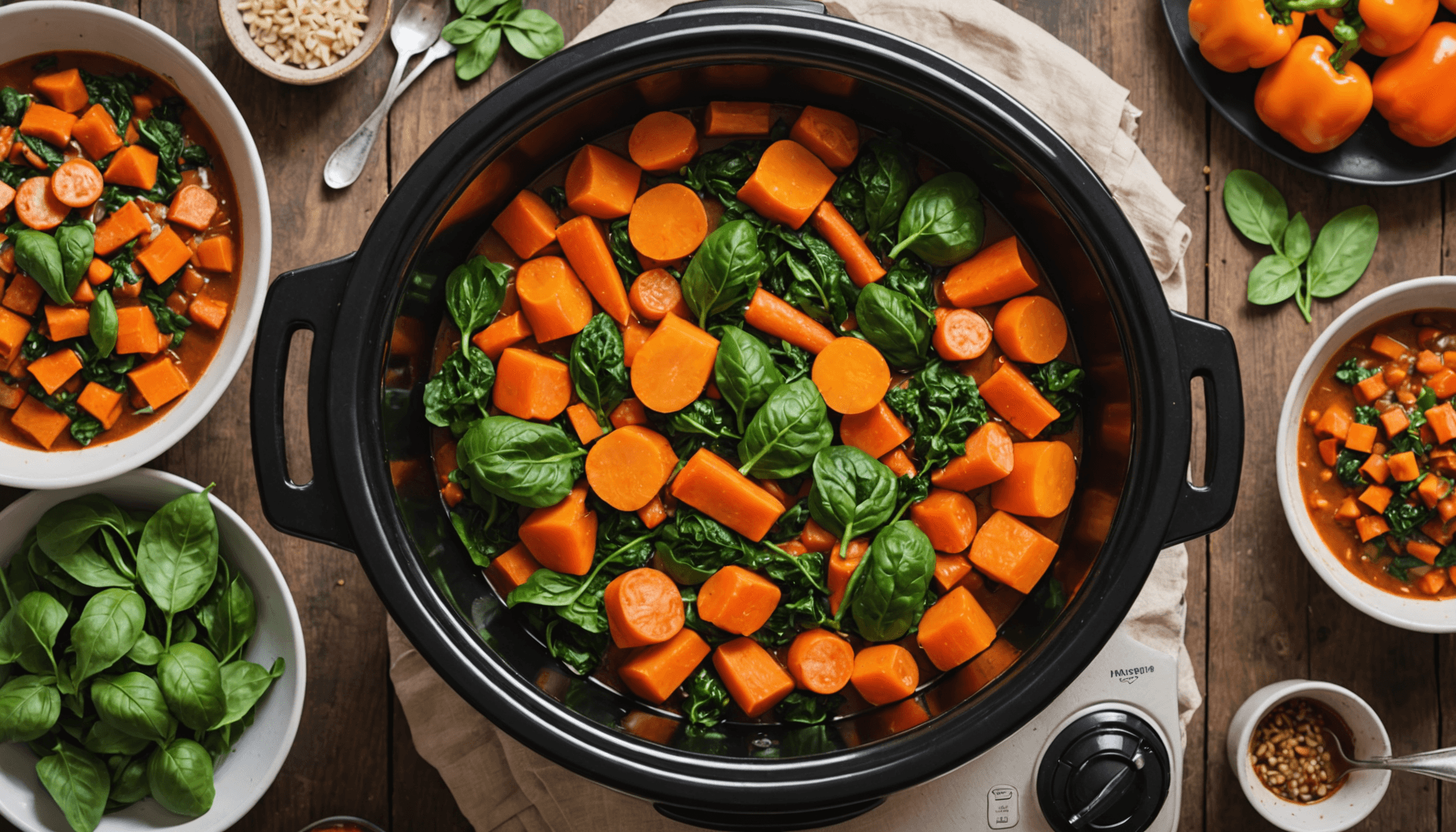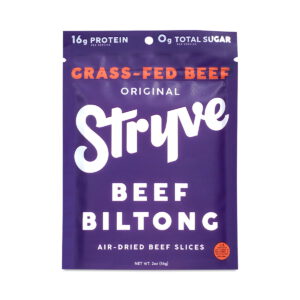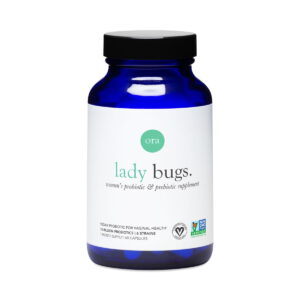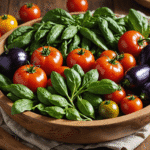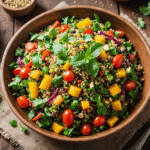- Healthy slow cooker benefits
- Essential ingredients for quick meals
- Top quick slow cooker recipes
- Meal prep tips for busy days
- Cooking times and temperature guidelines
- Serving suggestions and pairings
When it comes to grocery shopping, making informed choices can significantly enhance your experience and results, especially for those embracing a healthy lifestyle. Here are some actionable tips and advice that will streamline your shopping, whether you’re visiting a local store or browsing online.
Start by planning your meals around healthy eating principles. Before heading to the store, create a weekly menu incorporating quick recipes that can be easily prepared in your slow cooker. This will not only save time but also reduce impulse purchases of unhealthy items. Incorporate a variety of protein sources such as lean meats, legumes, and tofu to ensure balanced meals.
When shopping, prioritize fresh fruits and vegetables. If possible, choose local produce as it’s often fresher and more nutrient-dense. Farmers’ markets are a great option for organic and seasonal foods, and you may discover unique ingredients that can elevate your slow cooker dishes. When purchasing packaged goods, look for items with minimal ingredients and no added sugars.
For those on a budget, shopping for whole foods like grains, beans, and lentils can provide excellent nutrition without breaking the bank. Keep an eye on bulk bin sections where you can often find these items at reduced prices. Always check for sales and discounts on frozen fruits and vegetables, which retain their nutrients and are perfect for quick meals alongside your slow cooker recipes.
For vegans, ensure you’re stocking up on plant-based proteins and dairy alternatives. Items like almond milk, nutritional yeast, and chickpeas are great staples. Don’t hesitate to experiment with different spices and herbs; they can turn a basic dish into something extraordinary without adding extra calories.
Online shopping, while convenient, comes with its own set of precautions. Always buy from reputable retailers and read customer reviews regarding the quality of perishables. Check for online coupons that can help reduce overall costs and ensure you’re not paying more for shipping than the actual products. Lastly, whenever ordering groceries, select delivery options that prioritize freshness, especially for items like meats and dairy products.
Remember, maintaining healthy eating habits extends beyond just what you buy. Be mindful of ingredient safety by checking expiration dates and ensuring that packaging is intact. If you buy canned goods, for example, avoid any with dents or bulging tops, as these may pose health risks.
With these shopping strategies in mind, transforming your meals into delicious and nutritious slow cooker delights will become a seamless part of your routine.
Essential ingredients for quick meals
To create quick and nutritious meals using a slow cooker, it’s essential to have the right ingredients on hand. These foundational components not only allow for versatility and creativity in the kitchen but also ensure that your meals align with healthy eating principles. Here’s a breakdown of essential ingredients that can elevate your slow cooker dishes:
Protein Sources
Selecting lean protein is crucial for a balanced meal. Chicken breasts, turkey, and fish are excellent choices that cook well in a slow cooker and lend themselves to various flavors. Additionally, for vegetarian options, consider legumes like lentils, black beans, and chickpeas, which not only provide protein but also fiber, aiding in digestion.
Vegetables
Incorporate a variety of fresh vegetables into your slow cooker recipes. Root vegetables like carrots, potatoes, and turnips offer a hearty texture, while greens like spinach, kale, and bell peppers add essential vitamins and a pop of color. These ingredients enhance the nutritional value and visual appeal of your meals.
Whole Grains
Whole grains such as quinoa, brown rice, and barley are excellent additions. They serve as a healthy base for your meals, contributing to both texture and fiber content. Cooked grains can easily absorb flavors from the broth or seasonings used in your dish.
Herbs and Spices
To minimize added calories while maximizing flavor, stock up on a range of herbs and spices. Fresh herbs like basil, cilantro, and thyme, along with spices such as cumin, paprika, and black pepper, can transform simple ingredients into mouthwatering slow cooker creations.
Liquid Bases
The choice of liquid is critical when using a slow cooker. Low-sodium broth, vegetable stock, or even a splash of sweet and tangy tomato sauce are perfect options for providing moisture and depth of flavor to your meals. Avoid using heavy creams or high-sugar sauces, as these can detract from your healthy eating goals.
Incorporating these essential ingredients not only streamlines your cooking process but also simplifies your grocery shopping. Below is a comparison table of the benefits these ingredients bring to your slow cooker recipes:
| Ingredient Type | Examples | Benefits |
|---|---|---|
| Protein Sources | Chicken, lentils, tofu | Supports muscle health, keeps you full longer |
| Vegetables | Carrots, spinach, bell peppers | Loaded with vitamins, aids digestion, low in calories |
| Whole Grains | Quinoa, brown rice, barley | High in fiber, provides sustained energy |
| Herbs and Spices | Basil, cumin, paprika | Adds flavor without calories, enhances meals nutritionally |
| Liquid Bases | Low-sodium broth, vegetable stock | Keeps meals moist, enhances flavor profile |
Having these ingredients readily available can help streamline meal prep and ensure you are ready to whip up quick recipes that are both delicious and align with your healthy eating habits. This will empower you to make the most out of your slow cooker while enjoying diverse and satisfying meals throughout the week.
Top quick slow cooker recipes
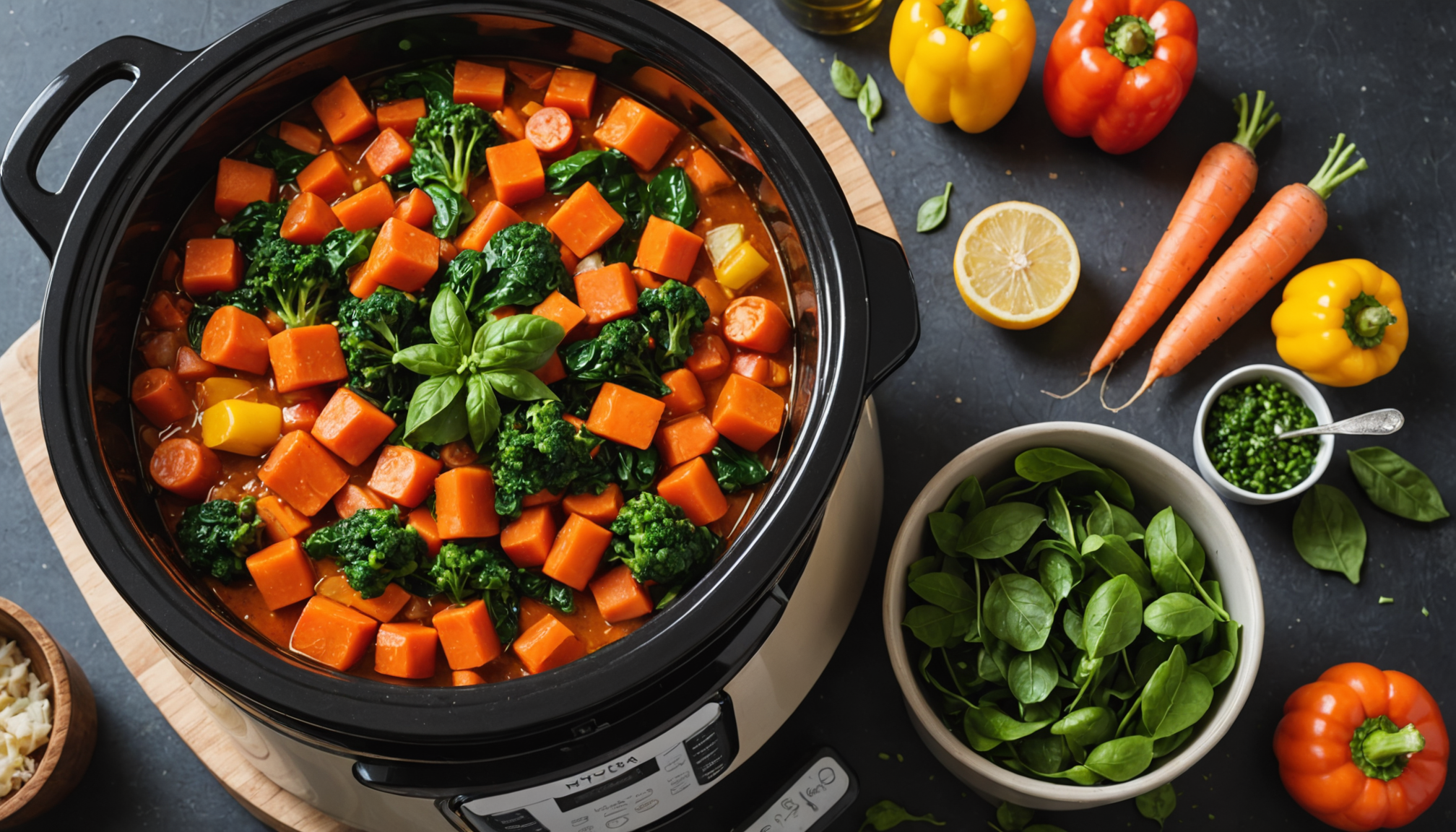
- Healthy slow cooker benefits
- Essential ingredients for quick meals
- Top quick slow cooker recipes
- Meal prep tips for busy days
- Cooking times and temperature guidelines
- Serving suggestions and pairings
When it comes to grocery shopping, making informed choices can significantly enhance your experience and results, especially for those embracing a healthy lifestyle. Here are some actionable tips and advice that will streamline your shopping, whether you’re visiting a local store or browsing online.
Start by planning your meals around healthy eating principles. Before heading to the store, create a weekly menu incorporating quick recipes that can be easily prepared in your slow cooker. This will not only save time but also reduce impulse purchases of unhealthy items. Incorporate a variety of protein sources such as lean meats, legumes, and tofu to ensure balanced meals.
When shopping, prioritize fresh fruits and vegetables. If possible, choose local produce as it’s often fresher and more nutrient-dense. Farmers’ markets are a great option for organic and seasonal foods, and you may discover unique ingredients that can elevate your slow cooker dishes. When purchasing packaged goods, look for items with minimal ingredients and no added sugars.
For those on a budget, shopping for whole foods like grains, beans, and lentils can provide excellent nutrition without breaking the bank. Keep an eye on bulk bin sections where you can often find these items at reduced prices. Always check for sales and discounts on frozen fruits and vegetables, which retain their nutrients and are perfect for quick meals alongside your slow cooker recipes.
For vegans, ensure you’re stocking up on plant-based proteins and dairy alternatives. Items like almond milk, nutritional yeast, and chickpeas are great staples. Don’t hesitate to experiment with different spices and herbs; they can turn a basic dish into something extraordinary without adding extra calories.
Online shopping, while convenient, comes with its own set of precautions. Always buy from reputable retailers and read customer reviews regarding the quality of perishables. Check for online coupons that can help reduce overall costs and ensure you’re not paying more for shipping than the actual products. Lastly, whenever ordering groceries, select delivery options that prioritize freshness, especially for items like meats and dairy products.
Remember, maintaining healthy eating habits extends beyond just what you buy. Be mindful of ingredient safety by checking expiration dates and ensuring that packaging is intact. If you buy canned goods, for example, avoid any with dents or bulging tops, as these may pose health risks.
With these shopping strategies in mind, transforming your meals into delicious and nutritious slow cooker delights will become a seamless part of your routine.
Essential ingredients for quick meals
To create quick and nutritious meals using a slow cooker, it’s essential to have the right ingredients on hand. These foundational components not only allow for versatility and creativity in the kitchen but also ensure that your meals align with healthy eating principles. Here’s a breakdown of essential ingredients that can elevate your slow cooker dishes:
Protein Sources
Selecting lean protein is crucial for a balanced meal. Chicken breasts, turkey, and fish are excellent choices that cook well in a slow cooker and lend themselves to various flavors. Additionally, for vegetarian options, consider legumes like lentils, black beans, and chickpeas, which not only provide protein but also fiber, aiding in digestion.
Vegetables
Incorporate a variety of fresh vegetables into your slow cooker recipes. Root vegetables like carrots, potatoes, and turnips offer a hearty texture, while greens like spinach, kale, and bell peppers add essential vitamins and a pop of color. These ingredients enhance the nutritional value and visual appeal of your meals.
Whole Grains
Whole grains such as quinoa, brown rice, and barley are excellent additions. They serve as a healthy base for your meals, contributing to both texture and fiber content. Cooked grains can easily absorb flavors from the broth or seasonings used in your dish.
Herbs and Spices
To minimize added calories while maximizing flavor, stock up on a range of herbs and spices. Fresh herbs like basil, cilantro, and thyme, along with spices such as cumin, paprika, and black pepper, can transform simple ingredients into mouthwatering slow cooker creations.
Liquid Bases
The choice of liquid is critical when using a slow cooker. Low-sodium broth, vegetable stock, or even a splash of sweet and tangy tomato sauce are perfect options for providing moisture and depth of flavor to your meals. Avoid using heavy creams or high-sugar sauces, as these can detract from your healthy eating goals.
Incorporating these essential ingredients not only streamlines your cooking process but also simplifies your grocery shopping. Below is a comparison table of the benefits these ingredients bring to your slow cooker recipes:
| Ingredient Type | Examples | Benefits |
|---|---|---|
| Protein Sources | Chicken, lentils, tofu | Supports muscle health, keeps you full longer |
| Vegetables | Carrots, spinach, bell peppers | Loaded with vitamins, aids digestion, low in calories |
| Whole Grains | Quinoa, brown rice, barley | High in fiber, provides sustained energy |
| Herbs and Spices | Basil, cumin, paprika | Adds flavor without calories, enhances meals nutritionally |
| Liquid Bases | Low-sodium broth, vegetable stock | Keeps meals moist, enhances flavor profile |
Having these ingredients readily available can help streamline meal prep and ensure you are ready to whip up quick recipes that are both delicious and align with your healthy eating habits. This will empower you to make the most out of your slow cooker while enjoying diverse and satisfying meals throughout the week.
Meal prep tips for busy days
Planning your meals in advance can transform your kitchen experience, especially when dealing with a busy schedule. Consider dedicating a specific day of the week to prep ingredients for your slow cooker meals. On this day, you can wash, chop, and portion out vegetables and proteins, making the cooking process seamless during the week. Store these prepped ingredients in airtight containers in the refrigerator, grouped by recipe, to save time when you’re ready to cook.
Make use of freezer-friendly meals as well. Prepare full meals such as soups, stews, or casseroles, then freeze them in portions. This not only keeps ingredients fresh but also allows you to whip out a ready-to-cook meal when you’re pressed for time. Just remember to allow for defrosting time in the refrigerator the night before, ensuring that everything is ready to go in the morning.
Utilize a slow cooker liner to minimize cleanup. These disposable liners fit snugly into your slow cooker and can be removed and tossed after use, making the entire process cleaner and quicker. It also means you won’t waste precious minutes scrubbing away once dinner is done.
Batch cooking is a powerful meal prep technique. Designate an afternoon for preparing a couple of recipes in larger quantities, then portion them out for individual meals throughout the week. Recipes that freeze well, such as chili or curry, are prime candidates for this approach, allowing for easy access to nutritious food without additional cooking.
When it comes to creating a shopping list, focus on quick recipes that utilize similar ingredients. This strategy not only minimizes waste but also allows you to familiarize yourself with multiple recipes that can be alternated throughout the week. For instance, if you purchase chicken and bell peppers, you can create a stir-fry one night and a slow-cooked chicken stew the next.
Lastly, keep your recipe cards or meal-planning apps handy. This way, you can quickly reference quick-recipes when inspiration strikes or when you’re trying to decide what to cook. Organizing your favorite healthy slow cooker recipes will help streamline decision-making and ensure you maintain your healthy eating goals, even on the busiest days.
“Failing to plan is planning to fail.” – Alan Lakein
Cooking times and temperature guidelines
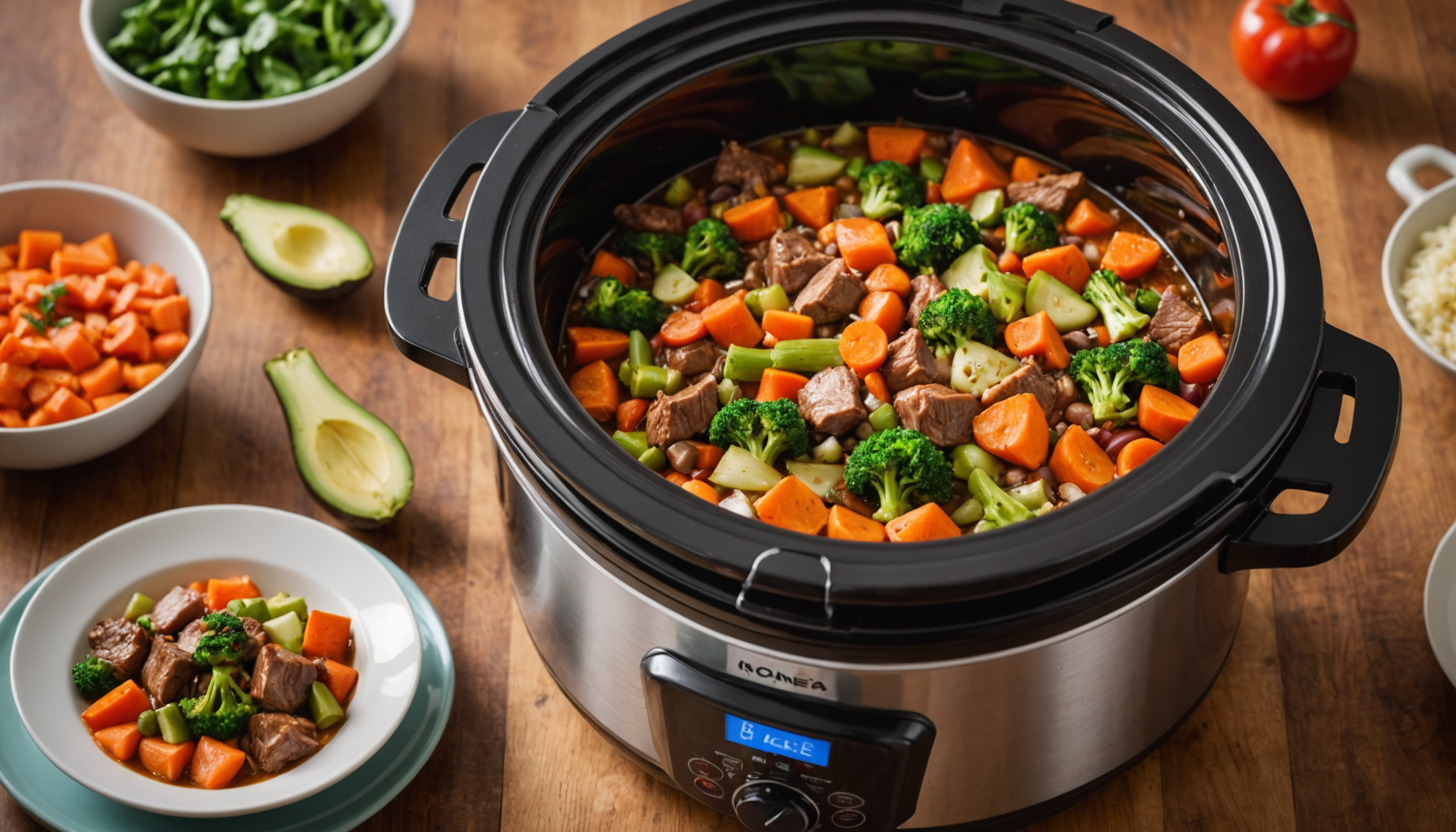 The cooking times and temperature settings for your slow cooker are fundamental aspects that can significantly influence the outcome of your meals. Knowing how to navigate these guidelines not only ensures your food is cooked properly but also helps in preserving its nutritional value. Different foods respond to varying cooking times and temperatures; hence, familiarizing yourself with these nuances is crucial in mastering the art of slow cooking.
The cooking times and temperature settings for your slow cooker are fundamental aspects that can significantly influence the outcome of your meals. Knowing how to navigate these guidelines not only ensures your food is cooked properly but also helps in preserving its nutritional value. Different foods respond to varying cooking times and temperatures; hence, familiarizing yourself with these nuances is crucial in mastering the art of slow cooking.
When using a slow cooker, the two primary temperature settings you’ll encounter are low and high. Generally, cooking on low typically requires about 6 to 8 hours, while cooking on high takes approximately 3 to 4 hours. Opting for low heat is often preferred as it allows flavors to meld beautifully over time while keeping ingredients tender and moist. However, if your schedule is tight, cooking on high can still yield satisfying results, especially with tougher cuts of meat that benefit from long, slow cooking to break down tough fibers.
While it’s helpful to follow the default cooking times provided with recipes, it’s essential to consider the size and cut of the ingredients you are using. For instance, larger cuts of meat, such as a whole chicken or a beef roast, may require longer cooking times than smaller pieces or ground meats. Similarly, root vegetables tend to take longer to cook than softer vegetables like spinach or zucchini. A creative tip is to cut your vegetables into uniform sizes to promote even cooking throughout the dish.
To avoid overcooking, particularly when selecting a high setting, use a meat thermometer to gauge doneness. For slower cooking techniques, the USDA recommends cooking meats to an internal temperature of at least 145°F for fish and beef cuts, 160°F for ground meats, and 165°F for poultry. This consideration not only assures food safety but also ensures that flavors and textures are optimized, delivering nutritious meals aligned with healthy eating habits.
Resist the urge to constantly lift the lid during cooking, as this can lead to significant temperature drops and prolonged cooking times. Instead, plan ahead by checking doneness about 30 minutes before the recommended cooking time.
When preparing quick recipes, comfort yourself with the understanding that using a slow cooker doesn’t have to mean you have to be present during the entire cooking process. The beauty of this appliance lies in its convenience, allowing you to set it and forget it while achieving delicious results.
- What is the difference between cooking on low and high in a slow cooker?
- Cooking on low generally takes 6 to 8 hours, while cooking on high takes about 3 to 4 hours. Low heat is often better for flavor development, while high heat is useful for quicker meals.
- How do I avoid overcooking my meals in a slow cooker?
- To prevent overcooking, follow recommended cooking times and monitor the temperature with a meat thermometer. Using the low setting for longer periods can also help maintain moisture and tenderness.
- Is it necessary to brown meat before adding it to the slow cooker?
- While browning meat isn’t essential, it can enhance flavor and color. If time permits, searing proteins before placing them in the slow cooker can add a depth of taste to your dish.
- How do I know when my slow cooker meals are done?
- Use a meat thermometer for meats, ensuring they reach safe internal temperatures. Additionally, check for tenderness and consistency of sauces towards the end of the cooking time.
- Can I cook frozen meat in a slow cooker?
- It’s not advisable to cook frozen meat in a slow cooker as it can stay in the temperature danger zone too long, potentially leading to foodborne illness. Always thaw your meat in the refrigerator before cooking.
- Can I make adjustments to cooking times based on ingredient size?
- Yes, larger pieces of meat and denser vegetables will require longer cooking times compared to smaller cuts or softer ingredients, so adjust times accordingly for even cooking.
- What should I do if my food isn’t cooking properly in the slow cooker?
- Ensure your slow cooker is functioning correctly and hasn’t been opened frequently, which can cause temperature drops. Check the density of the ingredients as well; a packed slow cooker can hinder cooking efficiency.
Serving suggestions and pairings
When it comes to serving suggestions and pairings for your slow cooker meals, the possibilities are not only endless but also allow you to tailor your dining experience to suit various tastes and dietary needs. A slow cooker opens up a world of flavor combinations and accompaniments that can elevate your meals, whether you’re cooking for a family, entertaining friends, or simply making a comforting dish for yourself.
To start, consider pairing your slow cooker creations with wholesome sides that complement the main dish. For example, if you’re preparing a hearty chili, serving it with a side of cornbread or whole grain rice can round out the meal beautifully. On the other hand, lighter recipes like vegetable stews can be paired with quinoa or a fresh garden salad, enhancing the overall nutrient profile.
For those following healthy eating habits, adding a variety of colors to your plate can boost both visual appeal and nutritional content. Incorporate steamed or roasted vegetables as a side. Options such as broccoli, green beans, and bell peppers provide essential vitamins and minerals while keeping the meal light and satisfying. Don’t forget about garnishes; a sprinkle of fresh herbs, a squeeze of lemon, or a dollop of Greek yogurt can dramatically enhance flavor profiles.
If you’re looking to increase the protein content of your meals, consider serving your slow cooker dishes with legumes or pulses. A side of chickpea salad or lentil soup can provide an excellent protein boost and hold your hunger at bay. Additionally, incorporating some healthy fats—like avocado slices, nuts, or seeds—can enhance the flavor and satiety levels while contributing to heart health.
For those who enjoy bread, opt for whole grain or sprouted varieties, which offer more fiber and nutrients than their white counterparts. Sourdough, whole wheat rolls, or even tortilla wraps can serve as delightful accompaniments to slow cooker recipes, allowing you to soak up delicious sauces and gravies.
Let’s not forget the art of pairing drinks with your meals! A glass of unsweetened iced tea or infused water can be a refreshing complement to a savory slow cooker dish. Alternatively, if you’re preparing something spicy, serving your meal with a cooling yogurt-based drink can provide balance and enhance the dining experience.
When it comes to planning portions, aim for a balanced plate where half consists of vegetables, a quarter is devoted to protein, and the remaining quarter accommodates whole grains or starches. This visual representation can help guide your serving sizes to keep meals healthy and satisfying.
Finally, explore creative twists on traditional pairings. Try new grains, such as farro, millet, or even cauliflower rice, to serve alongside your favorite slow cooker meals. Mixing different flavors and textures not only keeps meals interesting but also adheres to diverse dietary preferences—from vegan to gluten-free.
By approaching your meal pairings with an adventurous spirit, you can transform your slow cooker meals into culinary experiences that cater to your health goals and satisfy your taste buds.
New Customers Offer!
Free Gift for the new customer
$24 Value, When You Subscrib Visit Thrive Market
